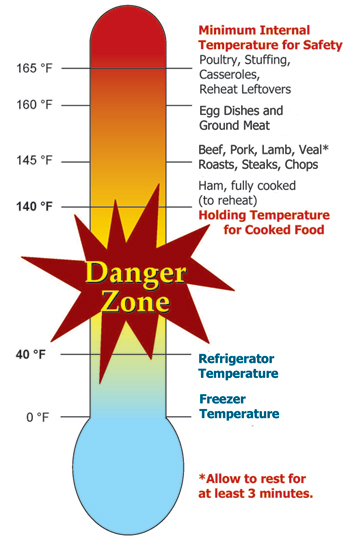On Feb. 12 the Kansas City Chiefs will take on the Philadelphia Eagles in Super Bowl LVII in Glendale, AZ. Whether you’re eating burnt ends or cheesesteaks, those watching at home will need to have their own game plan and a stiff defense to make sure food poisoning doesn’t put up any points against family and friends.
Ahead of the big game the U.S. Department of Agriculture’s (USDA) Food Safety and Inspection Service (FSIS) has released a food safety playbook to tackle foodborne illness head-on throughout the game:
Play 1: Boost your Food Safety Defense Strategy with Four Simple Steps for Preparing Foods
You can’t see, smell or taste harmful bacteria that may cause illness. When preparing food, follow the four guidelines below to keep food safe:

- Clean — When handling raw meat and poultry, wash your hands for at least 20 seconds and clean and sanitize surfaces often with soap, water and a sanitizer.
- Separate — Don’t cross-contaminate. Use separate cutting boards, plates and utensils to avoid cross-contamination between raw meat or poultry and foods that are ready-to-eat.
- Cook — Cook to proper internal temperatures, checking with a food thermometer.
- Chill — Refrigerate promptly and do not leave food out at room temperature for over two hours.
Play 2: Block Foodborne Illness and Bacteria by Staying out of the Danger Zone
Leaving takeout and delivered foods out too long at room temperature is not safe. Dangerous bacteria can grow most rapidly in the range of temperatures between 40 F and 140 F (the Danger Zone), doubling in number in as little as 20 minutes.

- If you order food and it’s delivered or picked up in advance of the big game, divide the food into smaller portions or pieces, place in shallow containers and refrigerate until ready to reheat and serve. You can also keep the food warm (above 140 F) in a preheated oven, warming tray, chafing dish or slow cooker.
- Perishable foods, such as chicken wings, deli wraps and meatball appetizers, should be discarded if left out for longer than two hours without something keeping them hot or cold. To prevent food waste, refrigerate or freeze perishable items within two hours.
- Leftovers should be reheated to an internal temperature of 165 F as measured with a food thermometer. If using a microwave to reheat, cover and rotate the food for even heating. Food should be placed evenly in a covered microwave safe glass or ceramic dish with the lid or wrap vented to let the steam escape.
Play 3: Get in the End Zone – Store Your Leftovers Safely
- To prevent bacterial growth, it’s important to cool food rapidly so it reaches a safe temperature of 40 F or below as fast as possible. Divide large amounts of food into shallow containers and cut large items of food into smaller portions to cool.
- Place leftovers into airtight containers to help keep bacteria out and retain moisture.
- Leftovers can be kept in the refrigerator for 3 to 4 days or frozen for 3 to 4 months. Although safe indefinitely, frozen leftovers can lose moisture and flavor when stored for longer times in the freezer.
The USDA FSIS also wants to remind game watchers that food delivered to homes requires the same amount of diligence to fend off food poisoning.
“Many Americans enjoy delivery and takeout foods during the Super Bowl for convenience, but food safety precautions are the same as food prepared at home,” said USDA Under Secretary for Food Safety Dr. Emilio Esteban. “To prevent foodborne illness, food should not be left out for over two hours without proper heating or cooling and should be placed out in small amounts and replenished as needed to keep your family and friends safe.”
(To sign up for a free subscription to Food Safety News, click here.)

